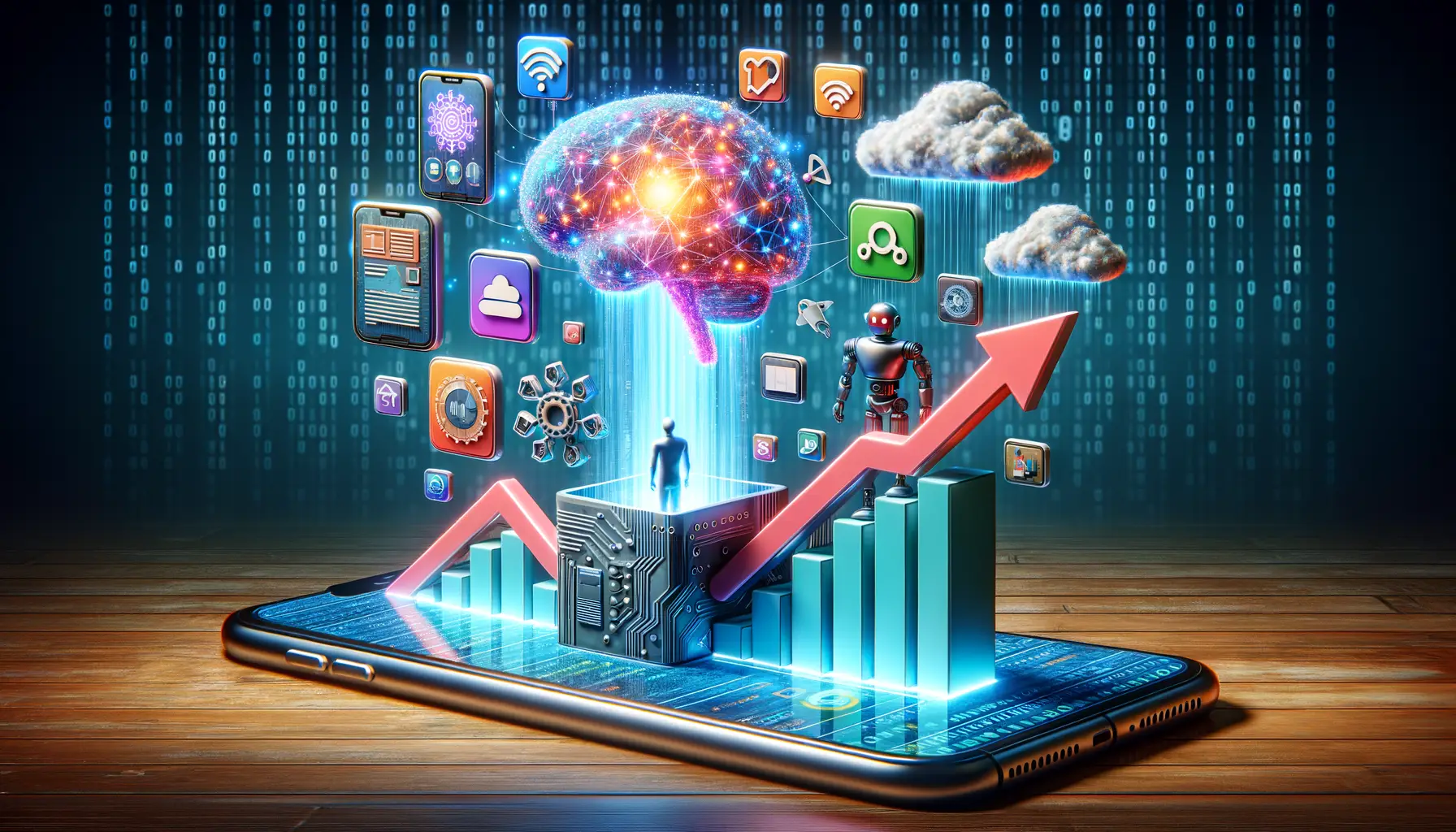Understanding the Role of AI in Task Automation
Why AI Is a Game-Changer for Task Automation
Imagine this: your apps working like a hive of buzzing bees, efficiently performing tasks without missing a beat. That’s the transformative magic of Artificial Intelligence (AI). AI doesn’t just automate—it thinks, predicts, and adapts. It goes beyond pre-programmed commands to make decisions in the moment, much like a trusted assistant who knows your habits better than you do.
With AI at the helm, routine tasks that once devoured hours—data entry, email sorting, scheduling—become speed-of-light processes. For instance, an AI tool can analyze thousands of customer emails in seconds, prioritizing complaints over compliments, like a laser-focused secretary who reads minds.
- Efficiency: AI eliminates human error, ensuring consistent accuracy.
- Personalization: Tailors workflows based on unique patterns, making every interaction feel custom-crafted.
- Scalability: Handles an avalanche of tasks with effortless grace.
A Glimpse into AI’s Superpowers
Think of AI as an orchestra conductor. It doesn’t play every instrument, but it ensures all parts—from simple app alerts to complex data analysis—work harmoniously. It’s the engine behind smart notifications, automated report generation, or even predicting what users need before they realize it themselves. When integrated well, AI turns chaos into symphony.
Steps to Integrate AI into Your Applications

Give Your App a Brain
Integrating AI into your application is like giving it a brain—one that learns, adapts, and makes your app smarter with every use. But where do you start? First, identify the tasks you want to automate. Maybe it’s sorting endless customer emails or predicting what users need before they even know it themselves. Be specific! A focused goal will help you choose the right tools and algorithms.
Then, think data. AI thrives on details—it’s like fuel for a rocket. Ask yourself: “What kind of data do I already have? And how can I collect more?” From sales transactions to user clicks, every crumb of information could be valuable to train your AI model.
Once you’re ready, here’s where the magic begins:
- Choose your framework: Options like TensorFlow or PyTorch are great for building custom solutions.
- Plug into APIs: For simpler setups, tools like OpenAI or Microsoft Azure let you integrate pre-trained models directly.
- Test and refine: Don’t set it and forget it. AI grows stronger with consistent tweaking and fresh data.
It’s not just coding—it’s crafting your app’s personality. Dive in, and watch as your app transforms into something dynamic, intuitive, and irresistibly brilliant.
Top Tools and Platforms for AI Automation

Game-Changing Platforms for Seamless AI Automation
Ready to supercharge your workflow? Let’s dive into a world of platforms built to handle the nitty-gritty so you don’t have to. These tools are like having an army of tireless assistants in your digital toolbox—ones that never sleep and always get it right.
- Zapier: Think of it as a maestro conducting a symphony of apps. Zapier connects hundreds of applications, allowing you to automate repetitive tasks in just a few clicks. For instance, need to copy leads from a form into a spreadsheet? Done, like magic.
- UiPath: The Rolls-Royce of automation platforms, especially if you’re dealing with enterprise-level tasks. From invoice processing to employee onboarding, it’s the tech equivalent of turning chaos into calm.
- Google Cloud AI: With pre-built AI models for natural language and image recognition, this platform is perfect for developers who want reliable tools without a PhD in data science.
The Hidden Gems You Shouldn’t Overlook
Not every tool gets the spotlight, but some gems truly shine when put to good use. Take Make (formerly Integromat), for example. It’s like Zapier’s artsy cousin—offering incredible visual workflows that give you a bird’s-eye view of processes. Or how about Microsoft Power Automate? Perfect for office warriors who live in the Microsoft ecosystem. And let’s not forget OpenAI API. Fancy crafting a chatbot or automating content generation? This one’s your playground.
Each platform brings something unique to the table. Explore, tinker, and make them work for you—because your time is way too valuable to be wasted on monotony!
Use Cases for AI-Powered Automation

Everyday Tasks Transformed by AI
Imagine having a tireless assistant working quietly in the background, handling the repetitive tasks that eat away at your precious time. That’s exactly what AI-powered automation does—it takes the mundane off your plate so you can focus on what truly matters.
Consider this: Are you tired of manually sorting through customer inquiries in your inbox? With AI tools like natural language processing, email triage becomes effortless. The system reads incoming messages, understands their intent, and categorizes them faster than you can sip your coffee. Not only is it efficient, but it cuts human error down to zero.
And then there’s data entry. Picture this scenario: You’re drowning in paperwork, spreadsheets, and forms. Instead of typing away for hours, an AI-driven solution scans, extracts, and uploads data into your systems. It’s like magic—but real.
The applications are endless. Whatever routine task has become your personal nemesis—chances are, AI can tackle it head-on.
Best Practices and Tips for Successful AI Implementation

Lay the Groundwork Before Jumping In
Implementing AI isn’t like flipping a magic switch — it’s more like planting a garden. You’ll need fertile soil (a clear understanding of your goals), the right seeds (quality data), and tools that fit your needs. Start small by identifying one or two routine tasks where AI could make an immediate impact. For instance, think about automating customer support chats or generating daily sales reports. These are tangible wins that build confidence while allowing room for adaptation.
And don’t forget: collaboration is key! Your team is invaluable in pinpointing pain points that AI can solve. Plus, fostering open dialogue helps ease any fears about AI “taking over.” Approach this as a partnership between humans and tech, not a takeover.
Rules to Live By for Success
Whether you’re an AI newbie or a seasoned techie, these tips will help you steer your project down the right path:
- Quality data trumps quantity: Feed your AI clean, relevant data. Think of it as giving a student the best textbooks—not random scraps of paper.
- Start with pre-trained models: They’re faster to implement and allow you to focus on fine-tuning rather than starting from scratch.
- Test relentlessly: Don’t trust blindly. Run pilot tests, gather feedback, and adjust. The devil is always in the details!
Above all, remember—AI thrives when we design it thoughtfully and deliberately, like crafting a trusted assistant that truly supports us.






